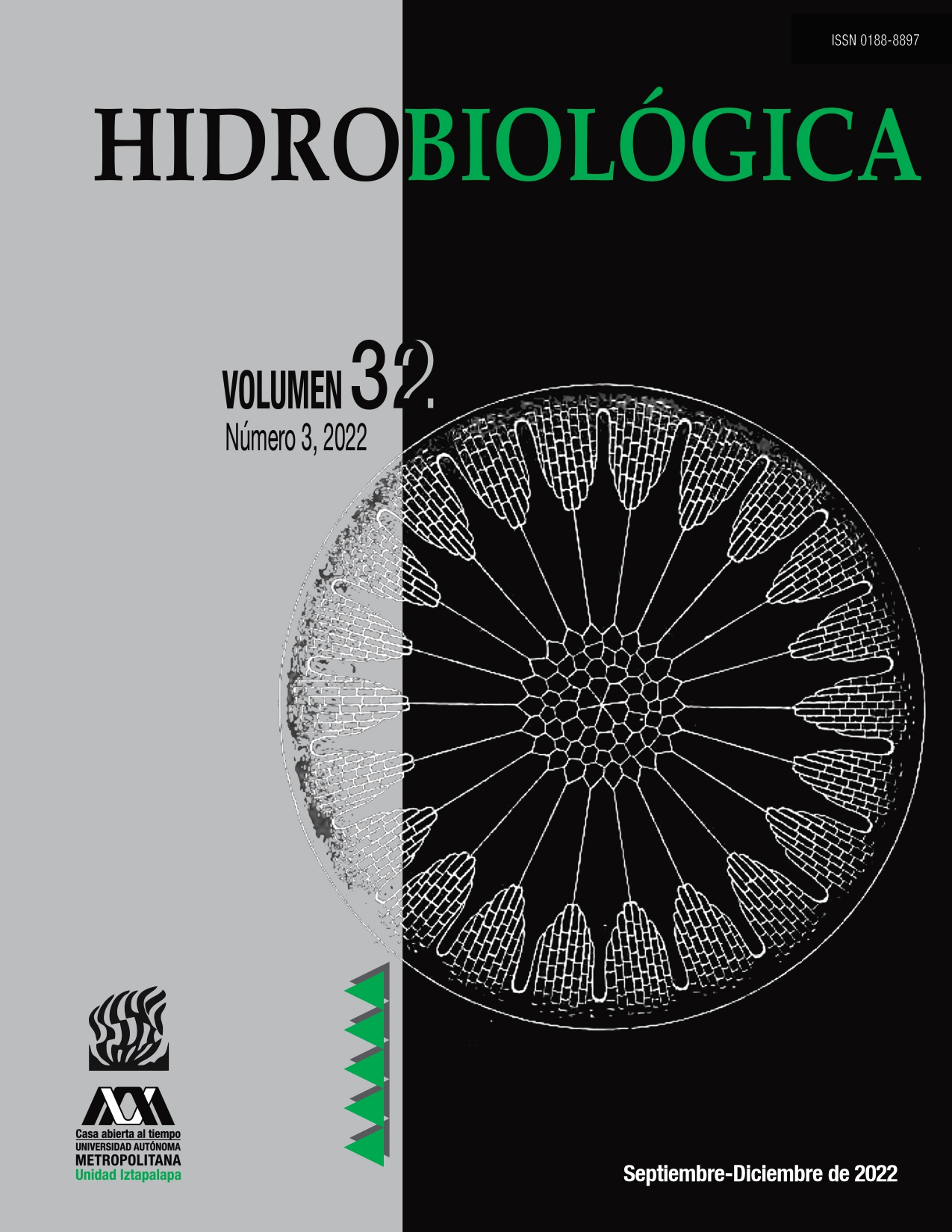Colonization of epizoic diatoms on larvae of Aliger gigas (Mollusca: Gastropoda)
Colonización de diatomeas epizóicas sobre larvas Aliger gigas
Keywords:
epizoic diatoms, gastropod larvae, Aliger gigas, microphytobenthos, Mexican CaribbeanAbstract
Background. In Mexico, few studies have been carried out on epibiosis. Epizoic diatoms are used as biological indicators of ecosystems due to their apparent epibiont specificity with host animals. Little is known about this specificity in the planktonic larval phases. There have been no studies focused on epizoic diatoms on the marine gastropod Aliger gigas larval shells. Goals. The objective of this work was to determine the species composition of epizoic diatoms in the larvae of A. gigas in the Xel-Há cove, the Mexican Caribbean. Methods. Mollusk egg masses were collected from their natural environment, and the larvae were cultured in seawater filtered through a 5 µm mesh under controlled conditions and fed with the eustigmatophycean alga Nannochloropsis oculata (1000 cells/ml). Shell surface of 60 larvae aged between 2 and 42 days was analyzed using scanning electronic microscopy. A relative abundance index was calculated to quantify diatoms. Results. In total, 83% of the examined larvae carried diatoms. Twenty-four diatom species were found: 68% were mobile, 24% were erect sessile and 8% were adnate species. Conclusions. The highest richness and abundance of epizoic diatoms in the A. gigas larvae were observed on bigger shells due to a larger available colonization area and a more stable substrate.
Downloads
References
Downloads
Published
How to Cite
Issue
Section
License
Los autores/as que publiquen en esta revista aceptan las siguientes condiciones:
De acuerdo con la legislación de derechos de autor, HIDROBIOLÓGICA reconoce y respeta el derecho moral de los autores, así como la titularidad del derecho patrimonial, el cual será cedido a la revista para su difusión en acceso abierto.
Publicar en la revista HIDROBIOLÓGICA tiene un costo de recuperación de $500 pesos mexicanos por página en blanco y negro (aproximadamente 29 dólares americanos) y $1000 pesos por página a color (aproximadamente 58 dólares americanos).
Todos los textos publicados por HIDROBIOLÓGICA sin excepción se distribuyen amparados bajo la licencia Creative Commons 4.0Atribución-No Comercial (CC BY-NC 4.0 Internacional), que permite a terceros utilizar lo publicado siempre que mencionen la autoría del trabajo y a la primera publicación en esta revista.
Los autores/as pueden realizar otros acuerdos contractuales independientes y adicionales para la distribución no exclusiva de la versión del artículo publicado en HIDROBIOLÓGICA (por ejemplo incluirlo en un repositorio institucional o publicarlo en un libro) siempre que indiquen claramente que el trabajo se publicó por primera vez en HIDROBIOLÓGICA.
Para todo lo anterior, el o los autor(es) deben remitir el formato de Carta-Cesión de la Propiedad de los Derechos de la primera publicación debidamente requisitado y firmado por el autor(es). Este formato se puede enviar por correo electrónico en archivo pdf al correo: enlacerebvistahidrobiológica@gmail.com; rehb@xanum.uam.mx (Carta-Cesión de Propiedad de Derechos de Autor).
Esta obra está bajo una licencia de Creative Commons Reconocimiento-No Comercial 4.0 Internacional.


